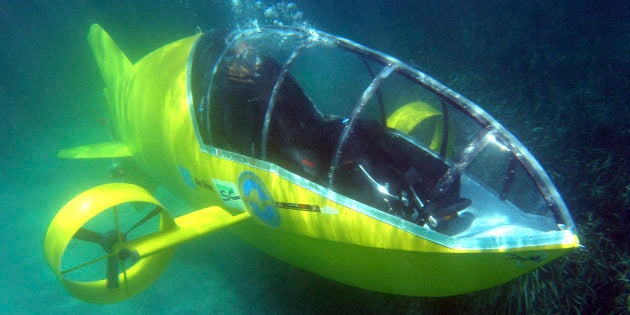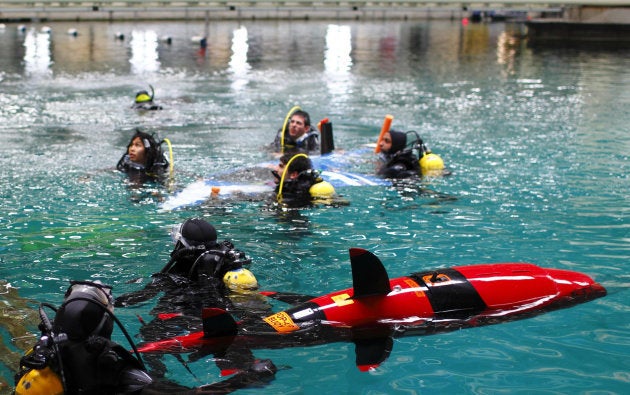
In a large pool in southern England this week, mini submarines have been taking part in an unusual race. Far from being diesel or nuclear vessels, they are powered by scuba divers pedalling furiously.
The fourth biennial European International Submarine Race in the town of Gosport has seen teams of university students build and race in a contest that mixes sport and engineering.
"It's an underwater bicycle ... Teams of engineers from all over the world have got to build a three-metre-long streamlined submarine that they have to propel with muscle power alone," race director William Megill said.
"It's a big challenge involving biomechanics, mechanical design, the flow structures and indeed materials."

Teams from the Netherlands, Canada and elsewhere brought their submarines for the event, which ended on Friday with prizes for innovation, speed and agility.
One craft at a time tackles the out-and-back slalom course in the pool at British defence company Qinetiq's Ocean Basin testing facility, which measures 122m and is 5.5m deep.
According to organisers, there are timing gates at 42m as well as 55m from the start, and some vessels reached speeds of six or seven knots.
"The main challenge of our sub is finding a sweet spot during the acceleration part at the beginning," Robin van der Sande of the Wasub team said.
"If we accelerate too fast, our sub is doing some strange things — but once we are on speed it feels wonderful."
-Reuters
